Fun fact: Jose Altuve’s first career home run was an inside-the-parker off Madison Bumgarner.
Everybody loved it, but Carlos Lee especially loved it.
That’s pretty much the Altuviest fact about Altuve. Since breaking out with the Astros back in 2012, he’s been known for his speed, his gap power, his defence, his stature, and his exceptional bat control.
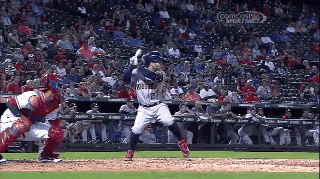
Altuve has started off this season on a tear, and while the batting average and stolen bases are undeniably there, it’s the power that has people talking. Through 13 games, Altuve has himself a Stanton-esque .314 ISO and a .637 SLG on the back of four doubles and four homers. His career ISO is .113 and his career SLG is .418.
Before we get into this discussion, let’s just recognize that this is too small a sample size to really tell if any trends are sustainable, but it’s still fun to look at so screw sample size.
This is Jose Altuve’s spray chart from 2015. The homers are black dots, he had 15 of them. Notice where they are.
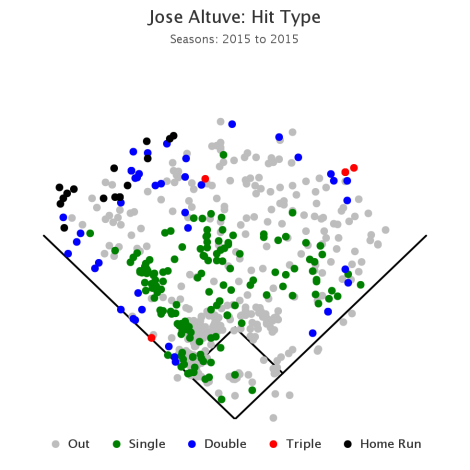
Source: FanGraphs
This is where Jose Altuve’s four home runs so far have gone in 2016.
Yup, right there are two big fat black dots in the right field bleachers. Otherwise known as opposite field homers. After Altuve led off a game with a 360 ft. dinger to right off Anibal Sanchez last week, the Astros announcers noted that not only was it his second oppo homer in a row, it was the second oppo homer of his entire career. 2737 at-bats and 38 homers—every one of them pulled—and then BAM, two in a straight hit the other way.
Just to make sure, I did a quick fact check, and … yeah, not quite.
Alan Ashby and Geoff Blum get a pass because Altuve’s hit his first opposite field homer before they joined the Astros as TV broadcasters, but Bill Brown—shame on you.
Still, something is obviously going on in this spicy small sample size soup of stats, so let’s dig in. The following chart breaks down Jose Altuve’s balls in play each year into three broad categories: the ones he pulled; the ones he hit up the middle; the ones he sent the opposite way.
Over 51 ABs this season, Altuve’s approach has shifted drastically towards the middle of the field, with his Center% jumping nearly 10% at the expense of pulling balls. I checked his Hard% but his quality of contact distribution is pretty much in line with his career norms. The only other anomaly I found was in his plate discipline.
He’s swinging less across the board, but especially when he’s thrown pitches out of the zone. His Contact% is also down a bunch, but I have no doubt that will regress to his career levels over the coming months. Altuve possesses some of the most elite contact skills in the league, and ranks in the top-20 in Z-Contact% and Contact% since his rookie season (2011).
Lets take a look at some footage to see if we can see anything different in his swing. The following are slowed down GIFs of Altuve home runs over the years.
2013 — Crouched backloaded stance with small toe-tap
2014 — Adds a leg kick
2015 — Higher leg kick
2016 — Looks similar, but possibly an even more pronounced leg kick?
The evolution of Jose Altuve’s swing can pretty much described as “He used to do a toe tap and then he switched to a leg kick.”
Unfortunately, MLB hasn’t put the videos of the two oppo homers on Youtube yet, and I cant embed MLB video in my blog. So we’ll have to do with links to the videos and pictures.
#1: 400 ft. to right-center field off Ian Kennedy. The leg kick:
#2: 360 ft. to right-right field off Anibal Sanchez. The leg kick:
The second image in particular illustrates how Altuve has taken his leg kick to new heights. He brings his foot in and up, coiling up his body before exploding into his swing.
A leg kick is a mechanism hitters use to time their power swings, and a higher leg kick is a sign that a hitter is loading even more weight on his back foot to drive and loft the ball. Through this young season, Altuve’s SwStr% has gone way up to 8.7% in comparison to his ~5% career norm, which is still relatively low, but supports the theory that he’s trying to swing for the fences a little harder this year.
Increasing power usually involves a trade-off that saps batting average, but if there’s any hitter who can get around that, it’s Altuve. He obviously won’t sustain a 44 homer pace, but I would take the over on his Steamer projected total of 11 HR and think that a 18-22 HR projection is reasonable if he continues to drive the ball the opposite way.


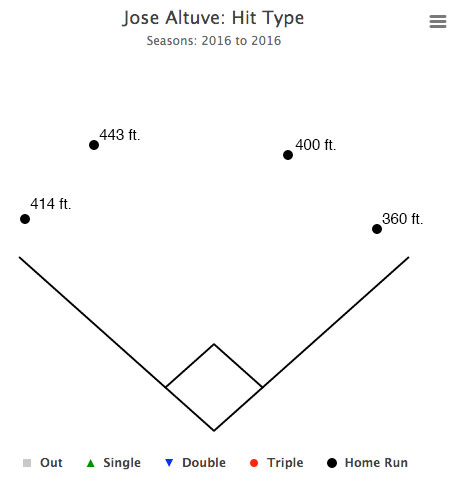
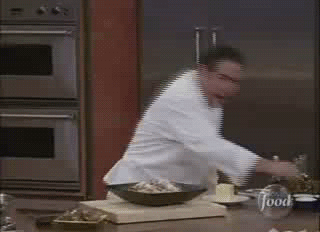
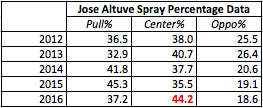

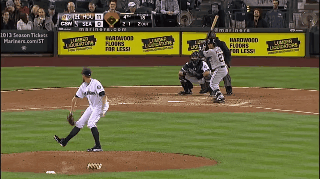
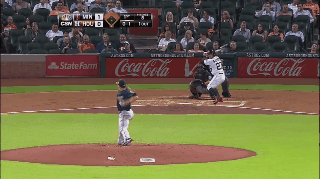
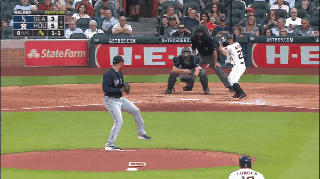



Noice!
LikeLike